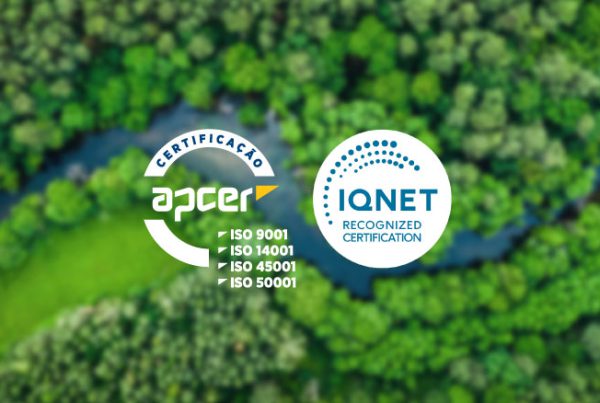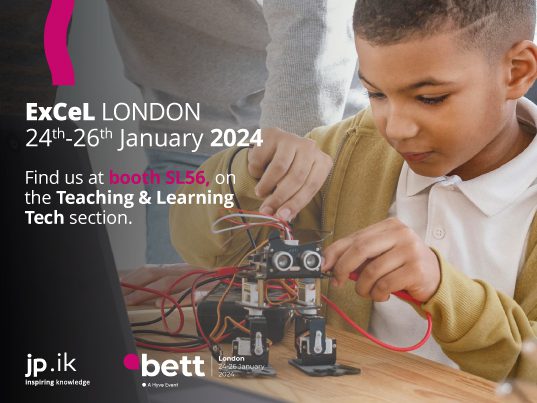Implementing technology into the classroom can often be a concern to many education professionals. Known as a distraction to learners, technology is often undervalued as the powerful tool that it is these days. If integrated in the right way, technology can be used as a booster to facilitate both teaching and learning experiences inside and outside of the classroom.
The active role as the provider of information in the classroom is played by the teacher with the main purpose of promoting the students learning activity fostered by a teaching-learning process. At jp.ik, we strongly believe Technology can help teachers to enhance this specific goal through the continuous usage of new EdTech approaches in the classroom environment.
As a Software Product Manager, I have a strong conviction that Software can boost several strategies to empower teachers and students in to getting better academic results. Using a collaborative classroom-learning solution allows the teacher to take a more active role in the engagement with the class. This empowerment of the relationship between students and teachers easily promote overall productivity and collaborative student work through the right tools for teachers to manage the student’s devices, the different custom-made strategies of engaging actively the students in to the class learning subjects and eliminating overall distractions.
The usage of technology in the education process can allow the following advantages:
Reinforce collaborative work:
Collaborative work is encouraged with the usage of technology solutions in the classroom environment, promoting communication between students when assignments are requested as a group work and it also allows freedom to learners to work separately when needed.
Active approach to learning:
Learners can take a more active approach to learning by creating a more meaningful classroom experience. Using technology means that everyone can also take advantage of going online. Internet can be often used in the teaching process and to keep track on the students’ development, focused in their progressive learning curve.
Broaden different perspectives:
The access to internet, through technology, can broaden new horizons to both teachers and students, because it provides a great amount of information of any subject. Exposing learners to different perspectives on their subject matter encourages them to develop their analytical skills. Building the learners their own perspective on the subject through exposure to a broader pool of information encourages critical thinking and discussion in the classroom.
Learning everywhere:
Education technology can provide the perfect scenario to learn outside the classroom. Considering a virtual classroom, learners can take the most of their time by studying on-the-go and, also, taking charge of their study schedule. On the other hand, tutors can assign work even when they are physically separated. This freedom can promote the development of schedule planning and task prioritization skills.
Different pace of learning:
Another advantage of Technology in the classroom is that teachers can adapt more easily their teaching methods to different student’s pace of learning. In the classroom of the future, everyone has the same opportunities to learn even though they have differences on their learnings’ rhythm by having access to all kind of resources to study at their own pace.
Realtime feedback:
On the course of the teaching-learning process, getting useful data on students’ progress can often be a difficult and time-consuming task for teachers. With the usage of technology, teachers can get fast and efficient feedback from students and, in that way, become more considerate of their students, adjusting the trajectory of the course where necessary.
Grading and track progress of the students take a lot of the teacher’s time, but with Educational Technology Software it’s possible for them to save a lot of time and provide learners with real-time feedback on their progress. Once again, considering tools that foster collaborative work reinforce the exchange of feedback between students, comment and editing each other’s work, that can encourage students to share ideas with more frequency than in the past.
Practice makes perfect:
Using technology can simulate real-world situations, which learners can benefit from. With a more practical study, students can benefit more from a learn by doing approach that can improve problem solving skills and give learners valuable experience in their field of study.
The multitude of different education technology tools available means that learners can present their work however they choose. By being allowed to express themselves freely in their work, whether through images and animation, video, text, audio or drawing, learners are encouraged to think outside the box and get creative with their studies.
As a Software Product Manager of an EdTech company, my bigger challenge is to turn minds direction into thinking of technology as a way for the teacher to engage students in to the learning process and to promote a better meaningful teaching experience, fostered by the introduction of education software in the classroom environment.
Our main goal with the usage of technology in the classroom environment is to promote new ways for educators to teach students with technology by their side as a support to the teaching experience, and not as a substitute of their role in the classroom environment, as we believe that technology is a powerful tool to create engagement in to the teaching-learning process.
Quoting Lao Tzu: “The journey of a thousand miles begins with a single step.†and I strongly believe that the first challenge of all is to reinforce the idea that technology can foster a complete and meaningful teaching-learning experience. Than we can explore more deeply in to the creative strategies of engaging students in to the process of learning within the classroom environment. Afterall I, myself, aim to conquer the respect of all the educational community players that get to influence younger minds worldwide. It’s going to be a hard assignment, but a necessary way to improve the perception of EdTech strategies in the educational ecosystem.
At jp.ik, we deeply feel the responsibility to shape, not only younger minds into learning, but also educators to make the necessary change to create more meaningful teaching-learning experiences. Technology can make a huge transformation in the classroom environment for both students and teachers and we have the will to opens people’s minds to this reality.
ikES is an educational software taught to empower teachers and engage learners into a more rewarding and interactive learning experience. Curious? Follow the link and learn more: https://ikes.jpik.com/en/
Gabriela Ferraz Vasconcelos
SOFTWARE PRODUCT MANAGER



